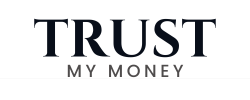Advertisement
Nearly 55% of American households now invest in the stock market, a recent survey by the Investment Company Institute shows. This growing trend shows more people are taking charge of their financial futures. Starting your investing journey in 2025 can be both thrilling and a bit scary.
Knowing where to begin is key. This section aims to guide you on starting your investment journey. There are many resources out there. New investors can learn the value of starting early and exploring different investment options.
We’ll cover the basics of investing. This will give you a solid foundation for the rest of the article. We aim to help you feel confident in the world of investing.
Understanding the Basics of Investing
Before you start investing, it’s key to know the basics. Investing is a way to grow your wealth over time. Learning the basics helps beginners make smart choices.
What Is Investing?
Investing means putting your money into things that might grow or earn income. It’s a smart way to make your money work for you. You can invest in stocks, bonds, mutual funds, and real estate.
Importance of Investing
Investing is key for reaching long-term goals like retirement or buying a home. It helps your money grow, beating inflation. Starting early lets you use compound interest to your benefit.
Common Investment Terms
Knowing common investment terms is vital. Here are some important ones:
| Term | Description |
|---|---|
| Stocks | Represent ownership in a company, offering potential for long-term growth. |
| Bonds | Debt securities issued by companies or governments to raise capital, offering regular income. |
| Mutual Funds | Investment vehicles that pool money from multiple investors to invest in a diversified portfolio. |
| ETFs (Exchange-Traded Funds) | Similar to mutual funds but trade on an exchange like stocks, offering flexibility. |
Learning these terms and concepts helps you start investing with confidence. For beginner investing strategies, understanding these basics is crucial. Then, you can grow your knowledge over time.
Setting Your Financial Goals
Before you start investing, it’s key to know what you want to achieve financially. Having clear financial goals helps guide your investment choices. It makes sure your strategy matches your goals.
Short-term vs. Long-term Goals
Financial goals can be short-term or long-term. Short-term goals are reached in a few years, like saving for a house or a vacation. On the other hand, long-term goals take decades, such as retirement or funding a child’s education.
Knowing the difference between these goals is important. It affects your investment choices. Short-term goals might need safer investments to be ready when needed. Long-term goals can handle more risk, which might lead to higher returns.
SMART Goals Framework
To set effective financial goals, use the SMART goals framework. SMART means Specific, Measurable, Achievable, Relevant, and Time-bound.
- Specific: Clearly define what you want to achieve.
- Measurable: Quantify your goal so you can track progress.
- Achievable: Ensure your goal is realistic based on your financial situation.
- Relevant: Align your goal with your broader financial strategy.
- Time-bound: Set a specific deadline for achieving your goal.
Using SMART criteria helps create a clear investment plan. For example, instead of saying “I want to save money,” a SMART goal is “I will save $10,000 in 5 years for a down payment on a house.”
| Goal Type | Timeframe | Investment Strategy |
|---|---|---|
| Short-term | 1-3 years | Conservative, liquid investments (e.g., high-yield savings, short-term bonds) |
| Long-term | 5+ years | More aggressive investments (e.g., stocks, real estate) |
Setting clear financial goals and knowing the right investment strategies are key for novice investors. This step is essential for a successful investment journey.
Assessing Your Risk Tolerance
Before you start investing, it’s key to know how much risk you can handle. Knowing your risk tolerance helps you create an investment plan that fits your financial goals.
What Is Risk Tolerance?
Risk tolerance is how much you can afford to lose in hopes of making more money. It depends on your financial situation, goals, and how you feel about uncertainty.
It’s not about being afraid of risk or not. It’s about finding a balance for smart investment choices.
Factors Influencing Risk Tolerance
Many things can affect how much risk you’re willing to take, such as:
- Financial goals and objectives
- Income and wealth
- Investment knowledge and experience
- Time horizon for investments
- Personal comfort with market volatility
For example, a younger person with a long time to invest might be more open to risk. They have more time to bounce back from market drops.
Measuring Your Risk Appetite
To figure out your risk appetite, you can use tools and questionnaires. They ask about your investment goals, how much risk you’re okay with, and your time frame.
| Risk Level | Investment Strategy | Potential Return | Potential Risk |
|---|---|---|---|
| Conservative | Bonds, CDs, and other low-risk investments | Lower returns | Lower risk |
| Moderate | Balanced portfolio with a mix of stocks and bonds | Moderate returns | Moderate risk |
| Aggressive | Stocks and other high-risk investments | Higher returns | Higher risk |
By understanding your risk tolerance and using tools to measure it, you can make better investment choices. These choices will match your financial goals and comfort level.
Types of Investment Accounts
The investing world has many account types, each with its own benefits and limits. It’s key for beginners to know these to make smart money choices.
Brokerage Accounts
A brokerage account lets you buy and sell things like stocks and bonds. It’s flexible and gives you control over your money, making it a top pick for many.
Key Features of Brokerage Accounts:
- Liquidity: Easily access your money when needed
- Flexibility: Invest in a wide range of assets
- Control: Manage your investments directly
Retirement Accounts (IRA, 401(k))
Retirement accounts help you save for later. They come with tax perks that boost your savings over time.
| Account Type | Tax Benefits | Contribution Limits |
|---|---|---|
| Traditional IRA | Tax-deductible contributions | $6,000 (or $7,000 if 50+) |
| 401(k) | Pre-tax contributions, tax-deferred growth | $19,500 (or $26,000 if 50+) |
Warren Buffett said, “Do not save what is left after spending, but spend what is left after saving.” This shows how crucial saving is, even for retirement.
“The biggest investment risk is not knowing what you’re doing.” – Warren Buffett
Other Options (Robo-advisors, Custodial Accounts)
There are more investment choices beyond the usual accounts.
Robo-advisors provide automated investment help. They offer a mix of investments and expert advice at a lower cost.
Custodial Accounts are for kids, letting grown-ups manage money for them until they’re adults.
Each investment account has its own special features, pros, and cons. Knowing these helps beginners make choices that fit their financial goals and how much risk they can take.
Diversifying Your Investment Portfolio
Spreading your investments across different types is key to investing. It helps lower the risk of big losses. Diversification also opens up chances for growth in different areas.
What Is Diversification?
Diversification means putting your money into various types of investments to lower risk. It works because different investments do well in different times. This way, your portfolio can have more stable returns over time.
“Diversification is the only free lunch in finance.” – This quote highlights diversification’s importance. It shows that spreading investments can reduce risk without losing out on returns.
Types of Diversification
There are many ways to diversify your investments:
- Asset allocation: Investing in stocks, bonds, and real estate.
- Geographic diversification: Investing in different countries or regions.
- Investment style diversification: Mixing growth and value investing.
The Benefits of a Diverse Portfolio
A diverse portfolio has many advantages, including:
- Reduced risk: Spreading investments lowers the impact of any one investment.
- Potential for more consistent returns: Diversification can make returns more stable over time.
- Increased potential for long-term growth: A diverse portfolio can grow in various areas.
In summary, diversification is crucial for managing risk and reaching long-term financial goals. By understanding and using diversification, new investors can be on the right path to success.
Popular Investment Options for Beginners
The world of investing has many options for beginners. Each option has its own benefits and characteristics. It’s important to know these to make smart investment choices that fit your goals and how much risk you can take.
Stocks
Stocks let you own a piece of a company. They can grow over time. Buying stocks means you own a small part of the company’s assets and profits. Stocks can be unpredictable, but they often give better returns than other investments over time.
Benefits of Stocks: They can offer high returns, are easy to sell, and help diversify your portfolio.
But, it’s key to know the risks. These include market ups and downs and the chance of losing money.

Bonds
Bonds are like loans to companies or governments. When you buy a bond, you lend money and get interest back. Bonds are seen as safer than stocks.
- Government bonds are very low risk because they’re backed by the government.
- Corporate bonds offer more interest but carry a higher risk of not being repaid.
Mutual Funds and ETFs
Mutual funds and ETFs let you invest in many securities with one investment. This can lower risk and increase potential gains.
Mutual Funds: They’re managed by experts who pick the investments.
ETFs: They follow a specific index, like the S&P 500, and can be traded like stocks.
Both mutual funds and ETFs make it easy for beginners to diversify and get professional advice.
Knowing about these investment options helps beginners make better choices. It’s a step towards building a portfolio that matches their financial goals and risk level. Following best investment tips for novices can really help your investment journey.
Researching Investments
The key to smart investing is thorough research on different investment opportunities. As a beginner, it’s important to know how to analyze potential investments. This knowledge helps make informed decisions.
How to Analyze Stocks
Analyzing stocks means checking a company’s financial health and growth potential. Start by looking at the company’s financial statements. This includes the balance sheet and income statement to see its revenue, expenses, and profit margins.
Key metrics to consider include:
- Earnings per share (EPS)
- Price-to-earnings (P/E) ratio
- Debt-to-equity ratio
As Warren Buffett said, “Price is what you pay. Value is what you get.” Knowing a stock’s intrinsic value is key for long-term success.
Resources for Research and Information
Many resources are available for investors to research and gather information. Financial news websites like Bloomberg and CNBC offer current market news and analysis.
Company reports, analyst recommendations, and financial databases also provide valuable insights into potential investments.
“The stock market is filled with individuals who know the price of everything, but the value of nothing.” –
Evaluating Market Trends
Understanding market trends is crucial for making informed investment decisions. This means analyzing economic indicators like GDP growth, inflation rates, and interest rates. These indicators show the overall economy’s health.
A well-diversified portfolio can help reduce risks from market changes. Regularly reviewing and adjusting your investment strategy based on market trends keeps you on track with your financial goals.
| Market Trend | Indicator | Impact on Investments |
|---|---|---|
| Economic Growth | GDP Increase | Positive for Stocks |
| Inflation Rise | Interest Rate Hike | Negative for Bonds |
The Importance of a Financial Plan
A good financial plan is like a roadmap for investors. It helps them deal with different market conditions. For beginner investors, it’s key to know that a financial plan is more than just investing. It’s about making a detailed strategy that fits their financial goals.
Creating a Comprehensive Financial Plan
To make a solid financial plan, start by looking at your current finances. This includes your income, expenses, debts, and savings. This step helps spot areas to improve and shows your financial health.
- Set clear financial goals, both short-term and long-term.
- Assess your risk tolerance and investment horizon.
- Determine your investment strategy based on your goals and risk tolerance.
- Choose the right investment accounts and vehicles.
By taking these steps, beginner investors can craft a financial plan that suits their needs. This plan will help them reach their financial goals.
Monitoring and Adjusting Your Plan
A financial plan should be dynamic, not static. It needs regular checks and updates to match market changes or personal shifts. Regular reviews keep the plan in sync with your goals and risk level.
- Schedule regular reviews of your financial plan.
- Rebalance your investment portfolio as needed.
- Adjust your investment strategy in response to changes in the market or your personal circumstances.
By keeping an eye on and tweaking their financial plan, investors can stay on course. They can adapt to market changes and reach their financial targets.
Tax Implications of Investments
When you start investing, knowing about taxes is key. Taxes can change how much money you make from your investments. Knowing about taxes helps you make better choices.
Understanding Capital Gains Tax
Capital Gains Tax is a tax on profit from selling investments. For beginner investment tips, it’s important to get this. If you sell something for more than you bought it for, you have a capital gain. This gain is taxed.
The tax rate depends on how long you held the investment. Short-term gains, held less than a year, are taxed like regular income. Long-term gains, held over a year, are taxed at a lower rate, usually 15% or 20%.
“The tax implications of your investments can significantly affect your returns. Understanding these implications is crucial for maximizing your investment growth.”
Tax-advantaged Accounts
Using tax-advantaged accounts is a great beginner investment tip. These accounts offer big tax benefits. They include IRAs, 401(k) plans, and Roth IRAs.
- Traditional IRAs: You can deduct contributions from your taxes. The money grows tax-free until you withdraw it, then it’s taxed.
- Roth IRAs: You contribute with after-tax money. So, you’ve already paid taxes. The money grows tax-free, and withdrawals are tax-free if you meet certain rules.
- 401(k) plans: These plans are offered by employers. They let you contribute before taxes, lowering your taxable income.
By using these tax-advantaged accounts, you can lower your taxes and increase your returns. It’s a key part of beginner investment tips that can greatly impact your financial planning.
Staying Informed About the Market
Investors who keep up with market trends do better financially. It’s key to know what’s happening in the market. This helps make smart investment choices and tweak portfolios when needed.
Resources for Market News
To get the latest market news, investors have many options. Websites like Bloomberg, CNBC, and Yahoo Finance give updates on market changes and economic signs. Also, subscribing to financial newsletters and following top financial analysts on social media can give great insights.
Some of the key resources include:
- Financial news websites (Bloomberg, CNBC, Yahoo Finance)
- Financial newsletters
- Social media platforms (Twitter, LinkedIn)
- Financial databases (Morningstar, Thomson Reuters)
As Warren Buffett once said, “Price is what you pay. Value is what you get.” Knowing the market helps investors see the real value of their investments.
Economic Indicators to Watch
Economic indicators are vital for grasping market trends. Important ones include GDP growth rates, inflation rates, and unemployment rates. These can greatly affect the market and investment choices.
| Economic Indicator | Description | Impact on Investments |
|---|---|---|
| GDP Growth Rate | Measures the growth of the economy | A higher GDP growth rate can boost stock markets |
| Inflation Rate | Measures the rate of inflation | High inflation can erode the value of fixed-income investments |
| Unemployment Rate | Measures the percentage of unemployed workforce | A lower unemployment rate can strengthen the economy and boost consumer spending |
By watching these economic indicators, investors can make better choices. They can adjust their investment plans as needed.
Building a Routine for Investing
Creating a consistent investing routine is key to reaching your financial goals. By making investing a regular habit, you move closer to your goals. This means not just putting money in, but also checking and tweaking your investment mix often.
Regular Contributions to Investments
One important part of a good investing routine is regular contributions. You can set up a plan where a certain amount is taken from your account at set times. Regular investments help with dollar-cost averaging, which lessens the effect of market ups and downs.
For example, investing the same amount each time can mean buying more shares when prices are low. And fewer shares when prices are high. This can lower your average cost per share, making your strategy more effective over time.
Setting Aside Time for Portfolio Reviews
Another key part of an investing routine is checking your portfolio regularly. This means looking at how your investments are doing, making sure they still match your goals, and making changes if needed. It’s best to review your portfolio every three months, but this can change based on your strategy and the market.
During these checks, you can rebalance your portfolio. This means adjusting the mix of investments to keep your desired balance. It helps manage risk and keeps your investments in line with your goals.
By having a routine that includes regular investing and portfolio checks, you can follow a disciplined approach. This not only helps you reach your financial goals but also makes managing your investments less stressful.
Avoiding Common Investment Mistakes
Novice investors need to watch out for common mistakes that can slow them down. Knowing these pitfalls helps investors take steps to lower risks and get better results. Good advice for new investors often includes avoiding these errors.
Pitfalls of Emotional Decision-Making
Emotional investing is a big risk for many. Decisions made on emotions rather than a solid plan can lead to bad results. It’s important for investors to stay calm and not make quick decisions based on market ups and downs.
The Dangers of Chasing Trends
Chasing trends is another mistake investors often make. Investing in a trend without really understanding it can cause big losses. It’s better for investors to keep their eyes on long-term goals, not just the latest trends.
Importance of Diversification
Not diversifying is a big mistake that can put investors at risk. By investing in different types of assets, investors can lower their risk and possibly earn more. A diversified portfolio is key to a successful investment plan, offering valuable advice for new investors.



